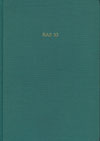River of Fleece, River of Song
1998

Autores:
Denise Y. Arnold y Juan de Dios Yapita
Editores:
Paginación:
Peso:
Formato:
ISBN:
Palabras claves:
Costo:
Disponibilidad:
E-mail: bas@voelk.uni-bonn.de
URLs: http://www.bas-bonn.de,
http://www.shaker.de/Online-Gesamtkatalog/details.asp?
ID=1269605&CC=7682&ISBN=3-931419-62-2
Latin America: ILCA, Casilla 2681, La Paz, Bolivia, Sudamérica.
This book examines Andean oral tradition from the point of view of the social actors involved: the women weaver-herders of Qaqachaka, an Aymara-speaking ayllu community in the Southern Andes. Its detailed description of their daily lives contributes to ethnographies of herders and weavers; its approach to Andean ethnohistory, foregrounding oral tradition, reveals that weaving and song are important alternative textual sources that have been unconsidered until now; and its attention to verbal art develops new directions in Aymara poetics, distinguishing it from Western poetical traditions. The book centers on one specific genre, the “songs to the animals”; song transcriptions in the original Aymara, with English translations, include those to the principle Andean camelids, llama and alpaca, as well as to many Old World animals introduced into the region: sheep and goats, donkeys and mules, horses and oxen. Performance contexts include the ceremonies of marking and mating the animals, songs sung on the tambo waystations, at the tax-gathering ceremonies, and first plowing.
At a practical level, the book relates the tradition of singing to the animals to weaving activities, and the production of fleece, emphasizing how the songs express the women singers’ on-going relationship with their surrounding ecology, mediated by certain ayllu birds named in the songs, that are considered to be the spirit muses of herd and fleece creation. At a theoretical level, the book applies critically to the Andes Derrida’s notion of “grammatology” (the study of writing systems), seeking to identify the kind of woven units that might be considered Andean “writing,” and the sung formulas and episodes that might constitute an Andean narrative “grammar.” The authors argue that, unlike Western writing based in paper and ink, which is predominantly under the charge of men, Andean woven textual elements are reproduced through these women’s songs.
- For me, it was most surprising how the data concerning the Celestial Black Llama still coincide with that of Huarochirí...
R. Tom Zuidema
An excellent study, written by distinguished researchers in the field...
Sabine Dedenbach-Salazar
Fax: La Paz (00 591 2) 2 419661 - Correo Electrónico: ilcanet@ilcanet.org

